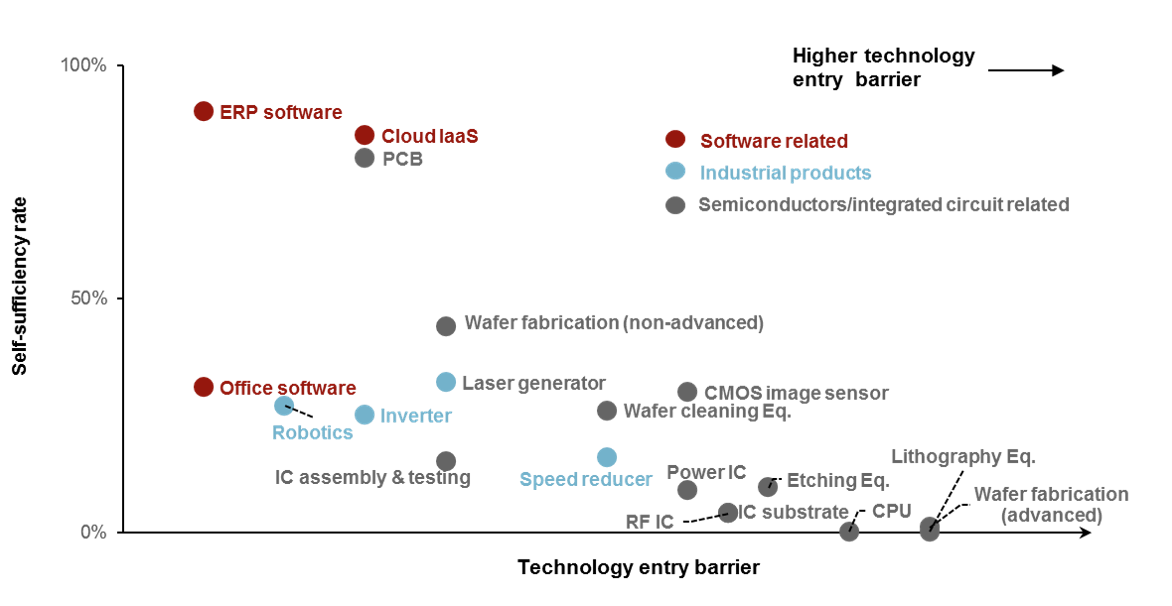Written by: Gabriela Santos
February 1st marked the start of the Year of the Tiger in the Chinese lunar calendar. This follows the Year of the Ox, associated with characteristics of hard work and pragmatism. 2021 was a year of steady reform introduction by Chinese authorities, focused on the long-term goals of improving the quality of growth and on addressing non-economic priorities like inequality, leverage, and decarbonization. While in many ways logical for the long-term, in the short-term, reforms may generate uncertainty which may cause economic deceleration and market volatility. The Tiger zodiac sign is associated with quick change, unpredictability – and also the potential for positive surprises. What should investors expect from China during the Year of the Tiger?
- Aiming for a floor on growth: In the second half of 2021, GDP growth shifted down from 7.9% year-over-year in 2Q to 4.0% in 4Q. This year’s focus is economic stability, with at least 5% GDP growth likely desired (consistent with the goal of doubling GDP-per-capita by 2035). Previously announced reforms are unlikely to be rolled back, but clearer communication and more vigilant implementation is expected.
- Marching to its own monetary policy beat: While the rest of the world reduces monetary accommodation, China is aiming to increase it. Credit impulse will likely turn neutral from restrictive, as policymakers have cut reserve requirements for banks, cut key policy rates, boosted targets for lending to priority areas, and frontloaded fiscal expenditures.
- Swimming against the tide with “zero tolerance” COVID approach: China is unlikely to shift gears in its approach to the pandemic, remaining the sole major country to continue restricting mobility and activity at the appearance of local cases of the virus. The arrival of the Omicron variant in China presents the risk of more nationalized lockdowns.
- More outperformance from fixed income, potential positive surprises from equities: In 2021, Chinese 10-year government bond yields fell 34bps while global yields moved up 40 bps, leaving Chinese government bonds one of the best performing bond markets in the world (up 6.6%). So far, this year has been a repeat given China’s easing versus global tightening. Historically, Chinese equities have rebounded fast and strong after an over 30% correction like last year, up 28% 26 months after a trough (on average from 2011-2021). This would turn Chinese equities from a big drag to a big boost in portfolios.
- How to invest in Chinese equities to remain much more nuanced: The recent wave of regulatory interventions and accelerated drive for self-sufficiency have led us to reappraise how we best capture the China opportunity.
- China’s consumer internet sector has been the main target of increased measures with new laws addressing anti-competitive behavior, labor rights in the gig economy and data security. Companies like Alibaba and Tencent are also being encouraged to dial back the monetization of their platforms and invest in social initiatives. The stocks have materially de-rated with Alibaba now on 13x forward price to earnings vs 29x in August 2020. But investors must ask what the right multiple is for a business whose management cannot allocate capital without the government’s implicit approval?
- Of course, it is possible to invest in alignment with Beijing’s strategic policy objectives. Those objectives include: semiconductor self-sufficiency, carbon neutrality and greater industrial automation. Not only are companies in these areas likely to stay out of the regulatory crosshairs, they could actively benefit from government subsidies and tax breaks. We do see good potential for domestic companies within the EV supply chain, where China is emerging as a global leader in battery cell manufacture; also enterprise software, which is very underpenetrated relative to the US and where the government wants to displace western companies like SAP and Oracle.
- Paradoxically, the area where China is making the biggest push for self-sufficiency, in semiconductors, is also the area where they are most likely to remain behind. Given the starting point and US efforts to restrict access to key technologies, international companies will likely retain their edge over any investable horizon.
China's self-sufficiency in key new technologies varies by barriers to entry
Current self-sufficiency rate amongst different technology products, percentage points

Source: J.P. Morgan Asset Management. ERP= Enterprise resource planning; IaaS = Infrastructure as a Service; IC= Integrated circuit; PCB = Printed circuit board; RF IC = Radio frequency integrated circuit. Based on J.P. Morgan Asset Management’s estimates as of January 31, 2021. Forecasts, projections and other forward looking statements are based upon current beliefs and expectations. They are for illustrative purposes only and serve as an indication of what may occur. Given the inherent uncertainties and risks associated with forecast, projections or other forward statements, actual events, results or performance may differ materially from those reflected or contemplated. Guide to China. Data are as of October 31, 2021.
Related: Is the Case for International Equities Just About Discounted Valuations and Currencies?


